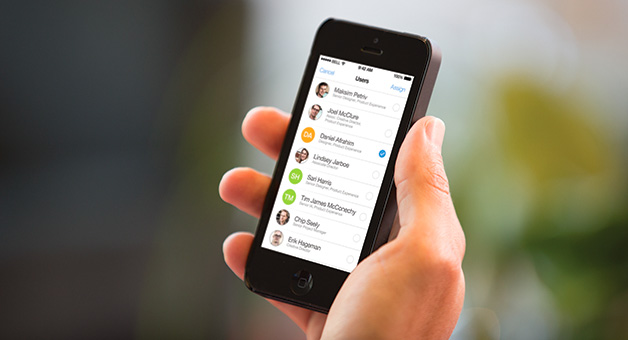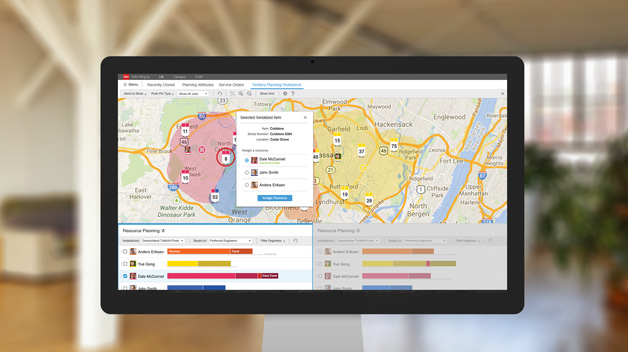Three clicks instead of ten. Two steps instead of five. White space. Intuitive icons. Drag and drop. As consumer UX underwent a renaissance over the last decade, enterprise software stagnated with a design sensibility from the dial-up era.
Usability—much less beauty—was never a priority for business software. All that mattered was that large and complex applications worked. What’s the point of tweaking and beautifying when basic functionality is challenging enough and all of your competitors are equally sub par?
The point is users. Not yesterday’s users who eventually adapted to whatever complex software product you put in front of them. Those users are retiring. I’m talking about millennial workers who know better than to settle for unwieldy, confusing applications that only make their jobs harder.
Back in 2012, with the changing expectations of a new workforce, Charles Phillips, my CEO at Infor, decided that it was time to set a new standard for enterprise UX. Without a roadmap to follow or stats to back him up, Charles made usability—and the beauty of the experience—a priority for Infor, based on his inherent belief that good UX is valuable for our business and to the people who buy and use our products.
How did Infor transform its expansive product line of more than 50 applications? How can you replicate our UX strategy within your own organization? And how did it all pan out? (Spoiler alert: Our “go big or go home” approach is paying off for our customers, our users, and us.)
Step 1: Build the Right Internal Team
I believe that innovation is borne out of relentless curiosity. When forming Hook & Loop, Infor’s creative lab, I sought talent outside the enterprise software space and was delighted to find creatives with a wide range of backgrounds, eager to bring fresh perspectives to enterprise software. This unconventional yet highly capable team includes former advertising folks like myself, artists, a CGI animator from The Avengers, a comic book illustrator, and a designer from Kenneth Cole. We also have designers with strengths in information architecture and code, as well as two developers with backgrounds in graphic design and another who started his career as a writer. Their career experiences combined with other staffers’ more traditional software backgrounds offers a balance of limitless curiosity and expertise.
Along with a rich diversity of competencies, there is an amazing lack of ego on our team. Everyone contributes and the best idea wins, whether it comes from a senior product developer or a recent college graduate, an industry veteran or a newbie. This open-mindedness produces a highly prolific and effective team, one that is truly greater than the sum of its parts.
Whether your product line demands one solid designer or a multi-faceted 60-person squad, it is crucial to build your team internally. Outsourcing UX may feel like the cleanest, simplest solution, but it probably won’t get you farther than a facelift. While Hook & Loop was always comprised of a full-time, in-house staff, we operated early on more as a consulting group, fixing small pieces of Infor applications. We quickly figured out that this approach would not scale nor help Infor with any long-term goals, which leads me to my next point.
Step 2: Foster Collaboration
Traditionally, an enterprise application was conceived in a vacuum: a product manager created a long list of features, and the end result was a product rich in functionality, but complicated to use. To deliver meaningful user experiences—and, ultimately, to build support both within your organization and among your customers—you need to work closely with three distinct groups: the executive team, your organization’s existing teams, and your users.
Collaborating with Infor leadership comes naturally to us, thanks to the executive team’s commitment to UX from the very beginning. With both teams based in Infor’s New York City headquarters, communication is constant, objectives are always clear, and quick deliverables and last-minute changes are easy. Impromptu collaboration often takes place in the office kitchen, on the way to lunch, or simply as someone walks by a team member’s desk. Structured meetings can be called quickly when necessary. Unlike traditional enterprise software companies, we are able to ship products and upgrades in just a few months. This would be impossible without leadership’s enduring support and transparency.
We also work with many teams within Infor, from industry-specific teams that serve sectors such as manufacturing, hospitality, and fashion, to strategy teams, marketing, and existing product teams. Essentially, we work with everyone. As a result, all of Infor has been exposed to Hook & Loop and, in turn, we’ve been exposed to all of Infor. This helps us deliver not only on our own goals, but also the strategies, wants and needs of the entire organization.
Next generation enterprise software will learn patterns, anticipate problems and provide solutions
Collaboration within your organization will get you far, but you also need to listen to and observe your users. We create meaningful experiences for field service technicians, data entry personnel, and hotel front desk clerks because we have watched them work and asked them about their pain points and wish lists. We learn what their days are like so we can understand what they need. Ultimately, we have been able to take a user-first approach to UX and structure experiences around the workflow of the user, rather than forcing the user to conform his workflow to the structure of the product.
Step 3: Go Beyond Good Looks
When Hook & Loop was formed, we set out to push Infor’s products past functionality and into more pleasurable experiences. This was a monumental task in itself for a company that grew through acquisitions. Disparate platforms, frameworks, navigation patterns, and interaction patterns made it difficult to unify Infor’s UX, but we did it in under a year by developing a set of guidelines and distributing them to help every product team adapt to the new UX directive.
Let me repeat that: we did it in under a year.
Now, we’re pushing ourselves even farther to not only simplify the experience of using enterprise software, but also to simplify the experience of work itself. One of our favorite examples at Hook & Loop is in manufacturing. Currently, when a machine malfunctions, everything in the production process comes to a halt, which results in costly downtime—and panic—until the issue is resolved. When we spoke to manufacturers, they said they wanted enhanced ways to fix floor problems faster, but this just left us wondering—what if we could prevent problems from happening? Inspired by predictive consumer technologies, we’re simplifying the way manufacturers work with an app that will anticipate factory floor issues and provide immediate solutions before they arise.
The next generation of enterprise software won’t just track, report, and distribute information. It will learn patterns, anticipate problems and provide solutions. It will do more heavy lifting, liberating organizations and their workers to imagine, invent and solve problems bigger than patching a broken machine.
The UX Evolution Has Only Just Begun
Businesses are starting to realize the potential of good UX. With a substantial percentage of the workforce retiring in the next three to five years, organizations need software for a new wave of workers—business software that works like the apps they use at home. Our customers who have already adopted Infor’s new UX are seeing lower turnover rates, less training time, and more satisfaction among their workers. They tell us they’re hungry for more. And we’re getting ready to deliver.
Image of clenched fist courtesy Shutterstock










